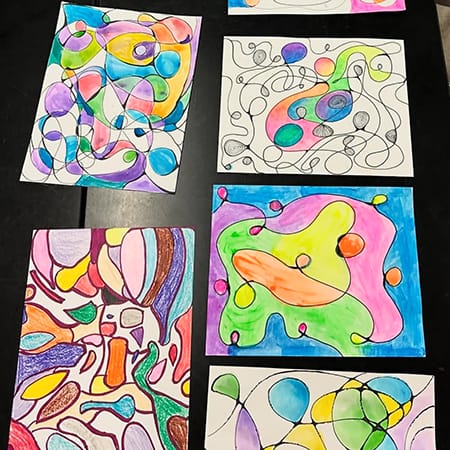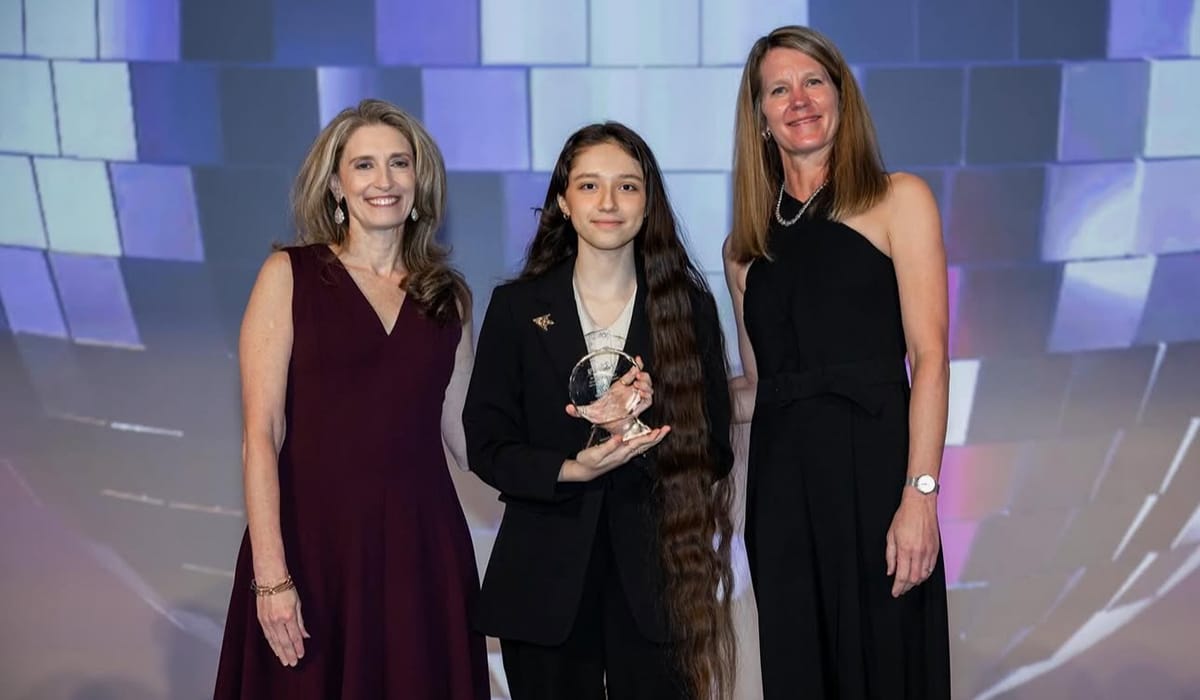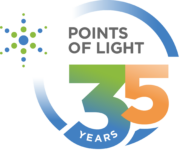TEEN ENSURES EVERYONE CAN ENGAGE WITH ART

Meet Daily Point of Light Award honoree April Surac. Read her story, and nominate an outstanding volunteer or family as a Daily Point of Light.
April Surac wants to live in a world where art is for everyone. Growing up, April always wanted to impact her community positively. Not sure how to go about that, she started getting involved with volunteer work as a young teen. Through forging connections with mentors that encouraged her dreams, April was motivated to start a project that carried out her goals in her own community. After thoroughly considering what type of project would be personal to her, April founded NeuraSensa in June of 2024.
The organization works to expand sensory-accessible art for neurodiverse individuals, including those with autism and Alzheimer’s disease. Through workshops hosted by NeuraSensa, with organizations like United Cerebral Palsy of Central Florida and the Brevard Achievement Center, neurodiverse participants can engage with sensory-friendly art created by April. They can explore textured materials, weighted fabrics and interactive surfaces in a way that enhances focus, self-regulation and creative expression. As a result of this opportunity to interact with the materials, their cognitive engagement and emotional well-being receive a greater sense of support.
April’s work with NeuraSensa has also allowed her to create the Sponsor-a-Kit program. She has assembled and distributed over 100 therapeutic kits containing custom tactile swatches, fidget textiles and interactive tools, all of which are strategically designed to support cognitive development at home and in therapeutic settings. A unique fusion of art, technology and health, April’s work creates accessible sensory experiences for an audience that is often left behind.
At just 17 years old, April’s accomplishments as a volunteer are astounding. Encouraged by her mentors to get out there and better her community, she’s multiplying that impact several times over. Her journey shows just how powerful the act of volunteering can be.

What inspired you to get started with this initiative?
Almost a year ago, I noticed how people with autism, Alzheimer’s and other sensory challenges in my community are often left out in creative or public spaces, whether in the classroom, museums or art galleries. I grew up around my family’s furniture shop, so I’ve always been hands-on with textiles and knew the importance of design and making it human-centered. I wanted to use that background to make art that people can interact with, especially those with sensory sensitivities. I create textile-based art that responds to touch, motion or sound, and I use layered fabrics, embedded sensors and vibrations.
Tell us about your volunteer role with NeuraSensa.
I combine engineering and art to create installation pieces at galleries. I also run workshops with my school and nonprofits locally, like United Cerebral Palsy of Central Florida and Brevard Achievement Center, where I host sensory art activities with students with disabilities. I try to create art pieces every month and engage with galleries. Typically, I spend around 20 to 40 hours designing each piece. Then I have to engage with educators to develop the sensory art sessions.
What are your long-term plans or goals for the organization?
I hope that I can reach beyond my local community. I want NeuraSensa to go statewide, hopefully by next year. I hope to be in bigger museums and galleries across Florida, especially in Orlando. Also, I want to do more solo exhibitions. I’d like to do more specific programming, like a sponsored program for kids where we can include these interactive therapy sessions.
What’s been the most rewarding part of your work?
Through this work, I’ve gotten to engage with pretty amazing people, especially artists. At one of the galleries, I engaged with a textile artist from MIT Media Labs. That lab was super interesting, because she’s a textile artist, so she did some pretty cool research work with textiles. She combined textiles with technology in her research. It was amazing to connect with her. Finding out about these amazing people, especially neuroscientists, is great. Another mentor I connected with worked at the University of Central Florida Brain Lab. I connected with him through the gallery, and he was very interested in my work. Getting to have these connections is extremely valuable for me.
What have you learned through your experiences as a volunteer?
That the world is not always created with people in mind. Especially in my work, I realized that when it comes to design and the tools we use in classrooms or public spaces, we should be more human-centered. Our spaces aren’t always created with humans in mind, so we should instead strive to create more sensory-friendly environments that are less overwhelming or challenging for people who may experience the world differently. That way, we can be more welcoming and more inclusive in design.
Why is it important for others to get involved with causes they care about?
Getting involved in causes that I care about brought me more confidence and made me realize that even though I originally thought I couldn’t make a difference, you can often create your own opportunities with volunteering. I want people to realize that sometimes just looking locally, or reaching out to people, is beneficial. Even if you don’t have that initial confidence, just starting out or just trying can make a difference.

Any advice for people who want to start volunteering?
There are usually events to help out with in your community. They are always looking for volunteers, especially if you’re in high school. I would recommend starting very locally. Get connected to that, whether it’s the Red Cross or any sort of established organization. Get that experience on how a volunteer organization is structured. If you are in hopes of creating something one day of your own, then I would say it’s essential first to work in a volunteer organization and get that local experience.
What do you want people to learn from your story?
When it comes to volunteer work, it can be anything. Think about how you can approach a community problem that you see. From my perspective, it’s interdisciplinary work combining technology and art. Even that can be volunteering. Hopefully, people can realize that you can be imaginative and creative with your volunteer work and find something that speaks to you.
Do you want to make a difference in your community like April? Find local volunteer opportunities.
